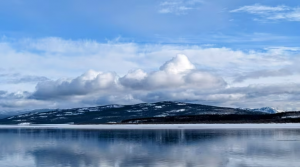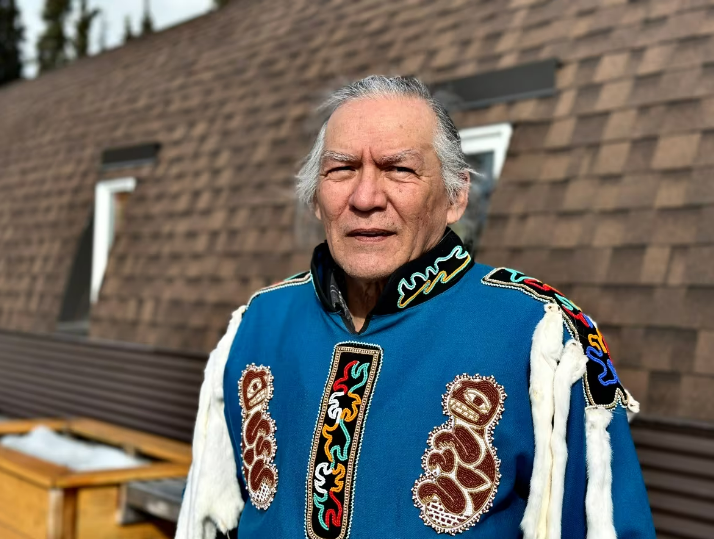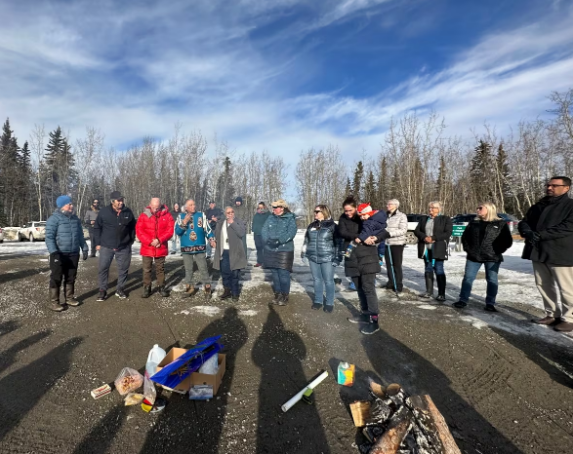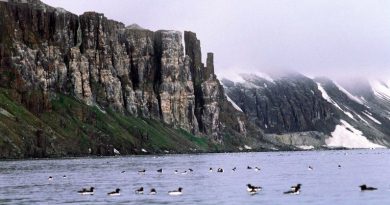Carcross/Tagish First Nation in Yukon celebrates commitment to protecting its river

Community members in Carcross/Tagish First Nation held hands with officials from the territorial and federal governments as they honoured the new management plan that will protect the Tagish River at a ceremony on Saturday.
“I don’t know if you guys noticed that swan that came and circled around … it says we’re doing good,” former chief Mark Wedge of the Carcross/Tagish First Nation said at the end of the ceremony.
About 30 participants indulged in smudging and prayers at the Tagish Bridge Recreation Site, southeast of Whitehorse. All were there to acknowledge their commitment to the Tagish River Habitat Protection Area management plan that was unveiled last November.
The plan is a collaborative initiative between the First Nation, the Yukon government and Ottawa. It includes several recommendations to protect a total area of five square kilometres that is home to a range of species. It also aims to restore and preserve the natural state of the Tagish River shoreline between Tagish and Marsh lakes.

Wedge, who chaired the planning committee, said the management plan is rooted in First Nations beliefs and values.
He added it must start with re-establishing a good relationship with the river.
“Mother Earth is crying and hurting,” he said.
“We have to try to heal her. But to heal her, we have to heal ourselves. And the way we start to heal ourselves is to reconnect with the land. So that’s why [we have] ceremonies. And the thing I always say to young people is to just go out to reconnect with the land.”
A plan for all living creatures
John Ryder, with the Yukon’s Department of Environment, said one of the challenges with the plan is finding a balance between the use of the area and protecting wildlife.
“People want to come boating … and then how do you manage that when you’re trying to maintain the cultural and ecological value at the same time?” Ryder told CBC on Saturday.

“Can’t solve everything during a planning exercise. There’s still a lot of work to be done moving forward.”
Scott Cameron, a wildlife viewing specialist with the Department of Environment, emphasized the need to protecting birds. He said the Tagish River area is one of the most important sites in southern Yukon for migratory waterfowl — that includes a wide variety of ducks and swans.
“It’s critical, very important to have these areas for the birds to rest and to feed,” Cameron said Saturday.
According to the final document, the management plan follows the natural rhythm of the four seasons as a way to recognize the Indigenous world view.
The plan is divided into sections — the medicine wheel — that describes each seasons and challenges.
“The medicine wheel provides a spiritual connection an understanding of traditional knowledge acquired over time through use and experience,” the document reads.
Sean McDougall, heritage manager and executive councillor for the Carcross/Tagish First Nation said the plan reflects the importance of the river as a place where people gathered for generations.
He also said it’s not only a way to commemorate elders but also to secure clean water for future generations.
“It’s something that’s been very meaningful for us and that we’ve been striving for for many years,” McDougall said.
“Historically, this is where the Tagish and Tlingit people had settled. And this was an area where we used … quite extensively for cultural values.”
McDougall said the next steps is working with the implementation’s committee and other governments to look into ways to turn the plan into actions.
Virginie Ann
Related stories from around the North:
Canada: Central Arctic Ocean fishing moratorium comes into effect, Eye on the Arctic
Finland: What a Saami-led salmon rewilding project in Arctic Finland can teach us about Indigenous science, Eye on the Arctic
Greenland: Glowing snailfish full of antifreeze proteins found off coast of Greenland, Eye on the Arctic
United States: Alaska’s Bering snow crab, king crab seasons cancelled, The Associated Press



